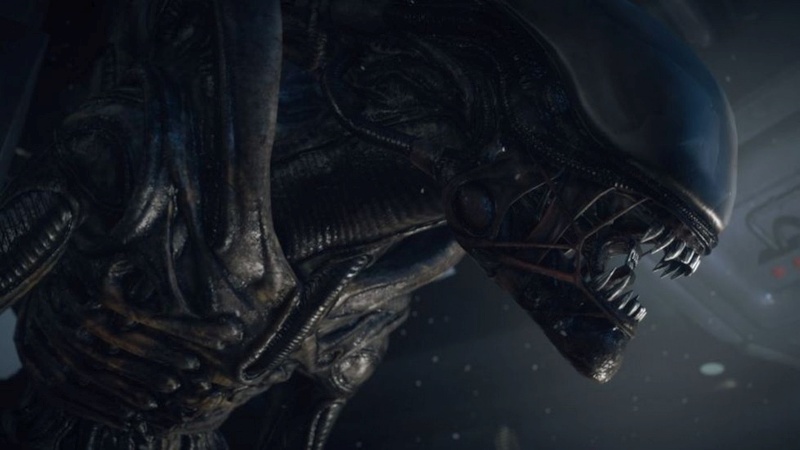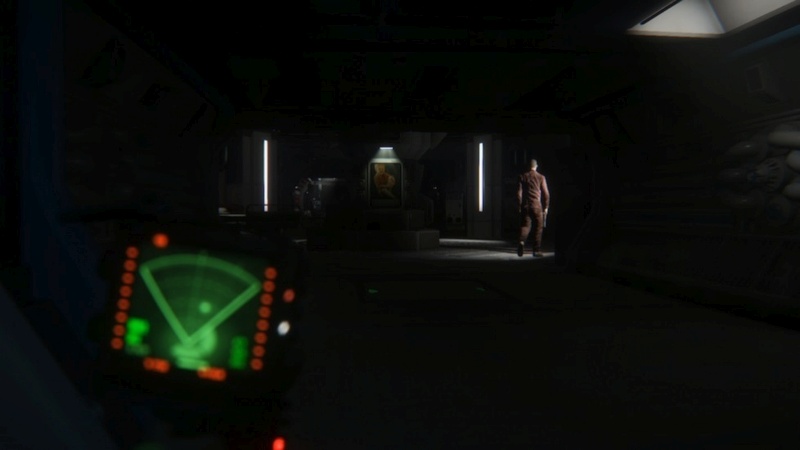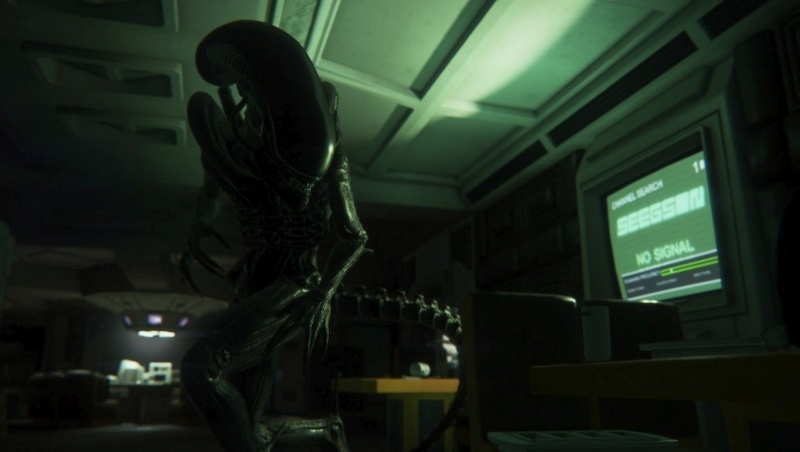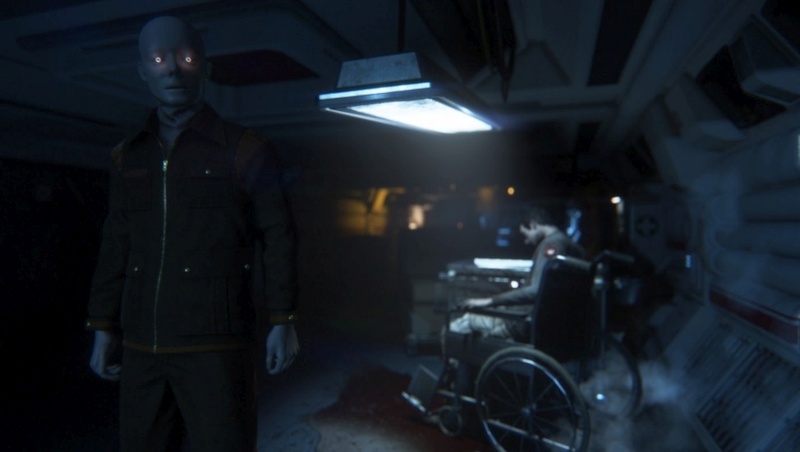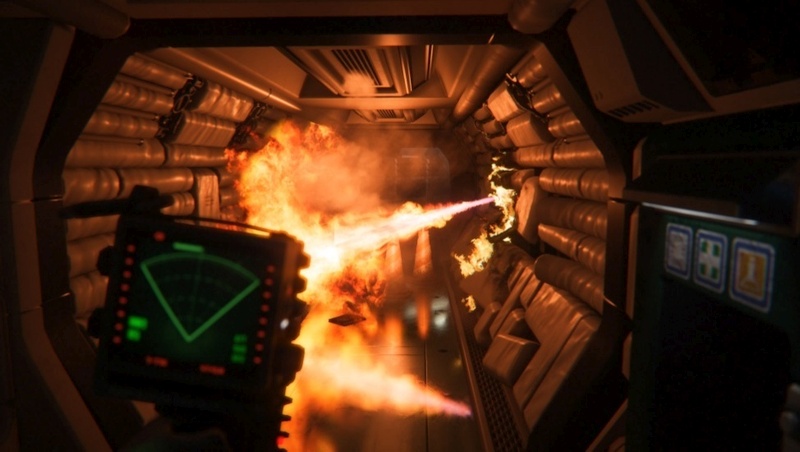This post has not been edited by the GamesBeat staff. Opinions by GamesBeat community writers do not necessarily reflect those of the staff.
(the following was reviewed on an Xbox 360 requiring at least 6.2 GB of free space for a mandatory installation; image credit: Sega)
EA’s Bond title for the PS2 in 2003, Everything or Nothing, had been cited by both critics and fans as a game so faithfully celebrating the source material it could have passed for a Bond film. Or more recently, the same with 2009’s Ghostbusters: The Video Game published by Atari.
Alien: Isolation is a lot like both of those titles, and although its story wasn’t written by Dan O’Bannon or Ronald Shusett, it feels as if it could have been.
Taking place in the year 2137, 15 years after the events of Ridley Scott’s 1979 film, Isolation follows Ellen Ripley’s daughter, Amanda, as she works as an engineer whose jobs take her close to the edge of space as part of her own personal quest to find her mother. Christopher, a synthetic (an android, or as they prefer to be called, “artificial person”) from Weyland-Yutani, arrives one day to say that a salvage crew may have found the flight recorder from her mother’s ship – the Nostromo – and invites her to come along to verify the data.
The flight recorder was taken by the salvage team to Sevastopol, a massive space station outpost built during the exploration boom right before things went bust. Trade lanes changed and as fewer people came Sevastopol’s way, the hope that the station would become a major hub faded away over the decades. Nowadays, it’s a ghost town, a relic of the Seegson Corporation that built it to double as a major manufacturing center for their own line of worker androids whose looks wouldn’t even get them past the front gate at Disney World. As I found out later from Seegson’s marketing PR, that’s intentional.
Isolation is essentially a lot like the first film in many respects story-wise, only here, it’s multiplied the dangers across a small city in space. Amanda even gets to pick up a few weapons, like a shotgun and flamethrower, later. Unlike EA’s Dead Space, however, Amanda never turns into a gun-toting space prophet of death like her mother did in the sequel.
It doesn’t take long before things go to hell. An accident in crossing over from her ship separates Ripley and company who barely make it over to Sevastopol where signs such as the closed storefronts, blown open floor panels, spray painted walls, and those creepy Seegson androids blankly staring back at her as if everything were still normal paint a picture that something is very, very wrong. That something eventually takes the form of a human crew person attacking her, forcing her to defend herself, and setting the stage for a desperate struggle to find the flight data and make it off of the station before it kills her and everyone else.
The only thing really missing from the look of the game is Ron Cobb’s name in the credits as a part of the art crew. Creative Assembly’s Jon McKellan and his team obsessively translated the low-tech and used world feel of his concepts seen in the original film, reaching across the decades and rendering the exposed pipework, weathered paint, flickering lights, and industrial CRTs from the silver screen incarnation. The irises for the maintenance crawlspaces, ASCII title screens, and even the ‘whoosh’ of the doors and the rising and falling whine of isolated electronics humming around Amanda have turned Sevastopol into a titanic version of the Nostromo. This isn’t a fancy, chrome-colored vision of the future. Like the original film, this is a place worn down by time, beaten up by its inhabitants, all painted over with a lived-in palette staining every bulkhead. Even on the aging Xbox 360, it still looked great.
The voice acting for the most part was solid giving each line enough spice to keep things moving. Fans of the film also get an extra treat with the voice logs of the Nostromo scattered throughout Sevastopol,voiced by the original actors such as Sigourney Weaver and Tom Skerritt. There’s also a ton of readable content located on terminals, notes, and other items scattered throughout Sevastopol adding to the atmospheric setting. Creative Assembly’s animators had even incorporated the in-place “jogging” that Ian Holm’s Ash had done, this time for Seegson’s androids. As a huge fan of the movie, that was a chilling piece of creep to see in the game, especially later on when things get much worse.
The soundtrack itself is composed of bits and pieces of the original by Jerry Goldsmith, now enhanced with a dynamic range of cues that followed my actions so closely to where I could tell something was about to happen much like in the movie. Swaths of silence and muted notes from the soundtrack heightened the tension in much the same way that Goldsmith had done with Ridley Scott’s original film, chasing down your nerves when fear starts to kick in and then backing off to make you wonder whether or not you should start running down that empty corridor.
Because that’s what Isolation does well – at least for most of the game. Lushly detailed areas are purposely left empty and inviting so as to lull players into a sense of safety. Stealth becomes second nature when it comes to hiding beneath desks, behind crates, or inside closets where you might be prompted to pull back and hold Amanda’s breath so as not to give her presence away to the Alien outside. I knew it would be coming, I just had no idea when it would. And when it did, it was the moment I’ve been waiting for in an Alien game for years.
The klaxon alarms of an incoming tram to the next part of the station…would it bring the Alien here? And where the hell can I go to stay close to the exit without revealing myself? Even using a crude motion tracker could give my position away. Vents aren’t always safe, and neither are the other people in the station who are often too desperate to talk to you to worry about whether you’re just passing by or are out to rob them of whatever supplies they have left.
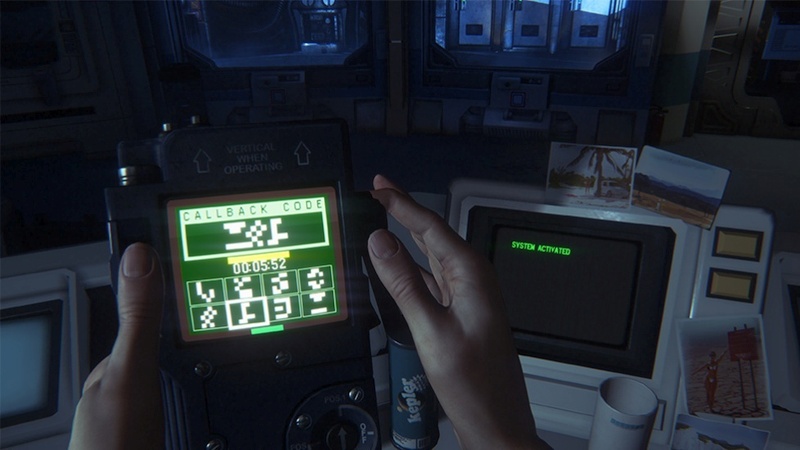
Above: The hacking mini-game takes two forms — this, where you need to match up symbols, and one where you need to push a button right at a highlighted sweet spot as an arrow moves side to side on a number of bars. These were fun distractions and, as Ripley upgrades her decoder, can be tempting to go back and try accessing locked terminals you couldn’t get to before.
The game doesn’t overly rely so much on jump scares as it does with creating an impending sense that there is something watching you and just waiting to creep up behind, above, or around the corner. Until Amanda actually finds something to defend herself and delay the fear for just a few more moments, just seeing the Alien in the open often felt like staring at certain death. There’s a health meter and there are other things in the game that can wear it down (for which she has to use healing meds or craft some of her own from the materials she can scavenge from the station), but most of the time, an Alien attack is the surest way to a reload screen.
The stealth in Isolation was similar to the same approach used in Arkane Studios’ Dishonored where gauging where enemies were looking and using your own eyes were all you really had to go on. The minimalist interface offers you nothing in the way of hints as to whether you’re hidden or not – it’s all environmental cues, the thumping of the Alien’s footfalls as it goes off in search elsewhere or what someone says, to tip off whether or not it’s safe.
When enemies go in search of you, it’s not some set pattern that they’ll often follow – especially in the case of the Alien – but it’s also not overly random. Left alone, most NPCs follow a set patrol pattern and there are gadgets that can help Amanda distract them from where she needs to go. At the same time, it sometimes falls back to some of the tropes that have plagued stealth games for years such as NPCs that eventually brush off things like a dead comrade or a missing partner after so long.
Amanda’s crafting system makes use of the bits and bobs found throughout Sevastopol to create things like molotovs, EMP mines, and valuable meds for heals. She can also find new things to build as long as she can find the right blueprints which are scattered throughout the station. Map downloads are also located everywhere, though the map system is just about as old-school as the tech. Sometimes it made it hard to actually find an objective because it was pointing at something that wasn’t quite on the same floor that I was on. Ripley will eventually get a cutting torch that can be upgraded along the way allowing her to cut open panels and open doors and panels.
There’s also quite a bit of doubling back on previously explored areas, though once the Alien makes an appearance, getting back through them becomes an even bigger risk which keeps the experience somewhat fresh. But over time, the Alien can start to wear out its welcome. Isolation is a lot of game and while I’m all for that, it can also feel as if everything that can go wrong does to nearly ridiculous levels.
It’s not perfect and closer to the climax, some of that repetition dogging Amanda’s steps finally reached a critical, chestbursting point. An excuse can probably be made paralleling her mom’s own forced retracing of her steps on the Nostromo when she had second thoughts about nuking it, but in the one or two cases where it was really pronounced (the Habitation Tower segment nearest to the end was one that comes to mind) combined with badly placed savepoints, it could get tiresome.
Still, at least for my experience, these were brief hiccups in an otherwise splendid performance by Creative Assembly’s designers. By the time it got to where the scare factor wasn’t working as it used to, roughly more than twenty hours had already passed in my game and by then, I was ready to go.
Towards the end, I was exhausted, tired, weary of running from the Alien at every turn, worrying about the fuel left in my makeshift flamethrower, and watching its tail burst from my chest with every mistaken idea that I was safe. Amanda wasn’t just a character in the game anymore – like her, I just wanted to get the hell off of Sevastopol.
In addition to the single-player game, there’s also a survival mode with set goals and a leaderboard tracking the best times to achieve them. These are set within the station and test the player’s ability to accomplish a number of tasks without getting killed in the fastest way possible to prove who the best and most efficient survivor is. Players can also replay any of the previous “mission” chapters in case they might have missed something, but on the whole, most of Sevastopol is open to exploration up to certain points. There’s also the promise of additional DLC in the form of story-based missions and additional Survival maps to add to the challenge. There’s no multiplayer, but this is one of those titles that doesn’t really need it to stand out.
Back in ’85, an adaptation of Alien by Concept Software was probably one of the closest attempts at trying to create the atmosphere of dread from the film. Since then, Alien games have become more synonymous with James Cameron’s explosive sequel explored across arcades, consoles, and PCs with a long string of exciting titles. Alien: Isolation has finally done for its roots what games such as Konami’s Aliens in the arcade have done for action fans. It may have taken nearly thirty years for someone else to take another shot at evoking what Scott’s film had delighted audiences with, but Creative Assembly and Sega have proven that good things can still come to those who wait.
